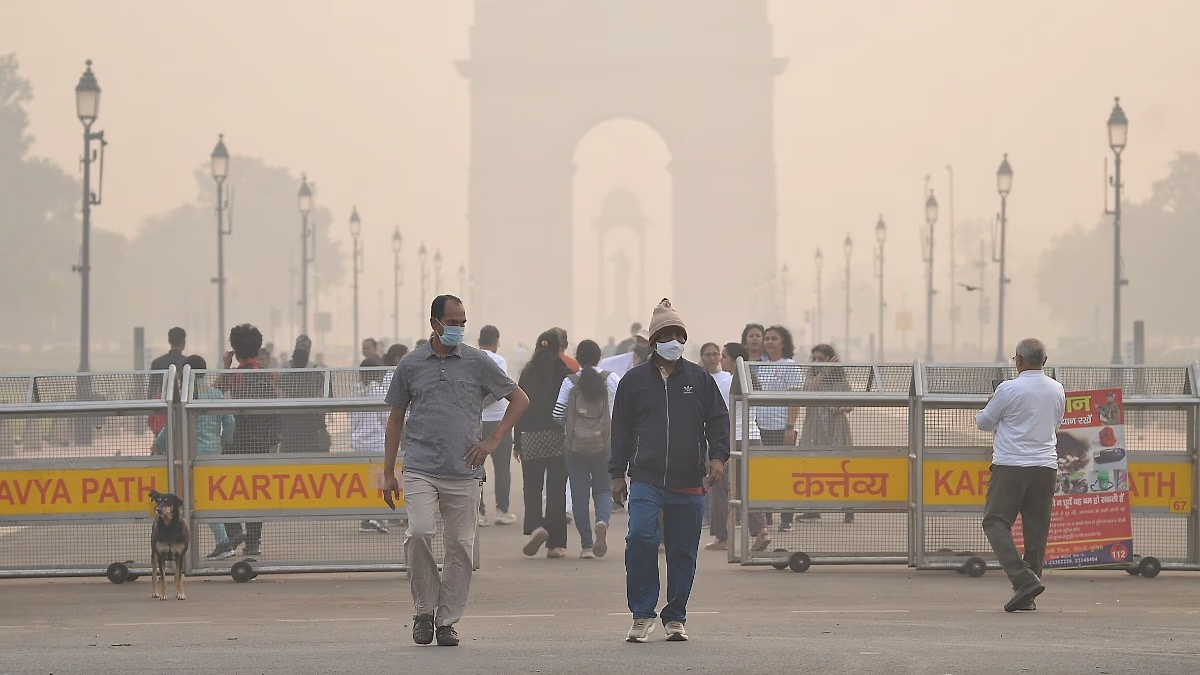Delhi Pollution:
Following an improvement in air quality on Monday, Delhi once again records poor AQI today, Tuesday, November 26. At 7 AM, the average AQI in Delhi falls in the very poor category. Hazy layers persist in numerous areas of the national capital. At 7 AM, Delhi's 24-hour average composite AQI was 396 (on the verge of severe). On Monday, the average AQI at 7 AM was 279 (poor category). Among the 39 reporting stations, 18 have categorized the air as severe, with several stations reporting AQI in the severe (400+) category by 7 AM.
Check Today's AQI Levels
Alipur-415Anand Vihar-436Ashok Vihar-419Bawana-424Karni Singh Stadium-403Jahangirpuri-421India Gate-412Mandir Marg-409Mundka-440Narela-413Lajpat Nagar-419Patparganj-409Punjabi Bagh-412Rohini-432Shadipur-422Sonia Vihar-424Vivek Vihar-430Wazirpur-422
Health Issues Arising from Pollution
According to the Central Pollution Control Board (CPCB), Delhi's AQI remains in the 'very poor' category in several areas. The AQI in Alipur is 415, Anand Vihar-436, Ashok Vihar-419, Bawana-424, Karni Singh Stadium-403, and Jahangirpuri is 421. Pollution causes a variety of health concerns for residents, with smog enveloping many parts of the city.
How is Air Quality Measured?
An AQI between 0-50 is considered 'good', 51-100 'satisfactory', 101-200 'moderate', 201-300 'poor', 301-400 'very poor', and 401-500 'severe'. Air pollution can lead to various diseases. In the Delhi-NCR region, restrictions are imposed based on this metric.
Understanding GRAP
GRAP stands for Graded Response Action Plan, a government strategy designed to address rising pollution levels in Delhi-NCR. It features multiple stages that intensify as pollution levels rise, leading to increasing restrictions in Delhi.
Stages of GRAP
Stage 1 is initiated when air quality in Delhi is poor, with AQI levels between 201 and 300.
Stage 2 is implemented if conditions worsen, with AQI ranging from 301 to 400.
Stage 3 takes effect if AQI surpasses 400, indicating very poor conditions.
The final stage, Level 4, is applied when conditions become severe.
Protection Against Pollution
To safeguard against pollution, cover your mouth and nose when stepping outside, or wear a mask. Use sunglasses to protect against eye allergies. Employ air purifiers at home during high pollution levels, and keep children and the elderly indoors. Encourage children to engage in indoor games rather than outdoor activities. Consider skipping morning and evening walks for a few days, as high pollution can cause breathing problems.




